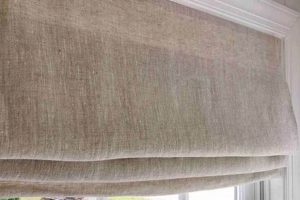The practice of coloring eyebrow hairs at home has gained considerable traction as a cosmetic technique. This method involves the application of a semi-permanent dye to the eyebrows, aiming to enhance their definition, shape, and overall appearance. For instance, individuals with light or sparse eyebrows may choose to darken them for increased visibility and a more pronounced look.
Undertaking this beauty treatment offers several potential advantages. Primarily, it allows for cost savings compared to professional salon services. Furthermore, individuals can customize the color intensity and shape according to their preferences, providing greater control over the final aesthetic. Historically, variations of this enhancement have been practiced utilizing natural dyes, though modern formulations provide more consistent and predictable results.
A comprehensive exploration of achieving this cosmetic effect necessitates a thorough discussion of safety precautions, suitable product selection, application techniques, and necessary aftercare procedures. The subsequent sections will delve into these crucial aspects, providing guidance for individuals considering this approach to eyebrow enhancement.
Essential Considerations for At-Home Eyebrow Enhancement
Achieving satisfactory and safe results with at-home eyebrow tinting requires meticulous attention to detail and adherence to established best practices. The following tips provide critical guidance for individuals pursuing this cosmetic procedure.
Tip 1: Conduct a Patch Test. Prior to full application, a small amount of the tint product should be applied to a discreet area of skin, such as behind the ear. Observe for 24-48 hours for any signs of irritation, redness, or allergic reaction. Discontinue use immediately if adverse reactions occur.
Tip 2: Select a Reputable and Specifically Formulated Product. Opt for tinting kits specifically designed for eyebrow use. Hair dye intended for the scalp is often too harsh and can cause skin irritation or damage. Verify product authenticity and check for comprehensive ingredient lists.
Tip 3: Thoroughly Cleanse the Eyebrow Area. Remove all traces of makeup, oils, and skincare products from the eyebrows and surrounding skin. This ensures proper dye adhesion and optimal color penetration.
Tip 4: Apply a Protective Barrier. Use a petroleum-based jelly or similar product to create a barrier around the eyebrows. This prevents unwanted staining of the skin and facilitates a cleaner application.
Tip 5: Adhere Strictly to the Recommended Processing Time. Over-processing can result in excessively dark eyebrows or skin irritation. Monitor the tinting process closely and remove the product precisely at the time specified in the manufacturer’s instructions.
Tip 6: Use Appropriate Application Tools. Utilize a small, angled brush or applicator to apply the tint evenly and precisely to the eyebrows. Avoid applying excessive pressure, which can lead to uneven color distribution.
Tip 7: Exercise Caution During Removal. Gently remove the tint with a damp cotton pad or cloth. Avoid scrubbing or harsh rubbing, which can irritate the delicate skin around the eyebrows.
These guidelines emphasize the importance of safety and precision when undertaking eyebrow enhancement at home. Diligent adherence to these recommendations can significantly improve the likelihood of a successful and aesthetically pleasing outcome.
The subsequent sections will address potential risks and offer troubleshooting advice to further support individuals in achieving desired results with this technique.
1. Product Selection
The effectiveness and safety of at-home eyebrow tinting are directly contingent upon the selection of appropriate products. Utilizing formulations not specifically designed for eyebrow use, such as standard hair dye, presents a significant risk of skin irritation, allergic reactions, and even damage to the delicate hair follicles in the eyebrow region. For example, a product with a high ammonia content, typically found in hair dyes, can cause severe burns on the sensitive skin around the eyes. Conversely, specialized eyebrow tint kits are formulated with milder chemicals and have undergone testing for safe use in the eyebrow area, mitigating these risks.
The composition of eyebrow tint products should be carefully scrutinized. Ingredients should be evaluated for their potential allergenic or irritant properties. Product reviews and certifications from reputable organizations can serve as valuable indicators of quality and safety. An appropriate selection process also involves matching the tint color to the individual’s natural hair color and skin tone to achieve a harmonious and natural-looking result. Furthermore, considering the longevity and fade resistance of the selected product is essential for managing expectations and ensuring satisfaction with the outcome. For instance, a client seeking a long-lasting effect would select a tint containing high-quality pigment that resists fading over time, rather than an unstable formulation.
In summary, product selection stands as a foundational element in the execution of at-home eyebrow tinting. The consequences of selecting an inappropriate product can range from minor irritation to severe adverse reactions. Therefore, a thorough and informed approach to product selection is paramount, ensuring both the safety and desired aesthetic outcome of the procedure. Future advancements in hypoallergenic and skin-friendly formulations continue to refine product options for safer applications.
2. Patch Testing
Patch testing constitutes an indispensable element in the realm of at-home eyebrow tinting. Its primary function is to preemptively identify potential allergic reactions or sensitivities to the chemicals present in the tinting product. Failure to conduct a patch test can expose individuals to significant dermatological risks.
- Identification of Allergic Sensitivities
Patch testing allows for the early detection of allergic reactions before widespread application. A small amount of the tinting product is applied to a discreet area of skin, such as behind the ear or on the inner forearm. The area is then monitored for 24-48 hours for signs of redness, itching, swelling, or blistering. For instance, an individual may be unaware of an allergy to a specific dye component until a patch test reveals a localized reaction.
- Prevention of Severe Adverse Reactions
Without a patch test, an individual could experience a severe allergic reaction upon full application of the eyebrow tint. This could manifest as contact dermatitis, facial swelling, or, in rare instances, anaphylaxis. A patch test serves as a safeguard against these potentially serious health consequences. A common scenario involves delayed hypersensitivity reactions, which may not
appear immediately but can develop after prolonged exposure, making prior testing essential. - Informed Decision-Making Regarding Product Use
The results of a patch test provide critical information for making informed decisions about whether to proceed with at-home eyebrow tinting. A positive reaction definitively indicates that the product should not be used. Conversely, a negative result suggests, but does not guarantee, that the product is safe for use. This data empowers individuals to prioritize their health and safety over aesthetic considerations. For example, if a patch test reveals sensitivity to a particular brand, the individual can explore alternative, hypoallergenic options.
- Minimization of Skin Damage and Irritation
By identifying potential irritants before full application, patch testing reduces the likelihood of skin damage and irritation around the sensitive eyebrow area. Even mild reactions can lead to discomfort, inflammation, and prolonged healing times. Proactive patch testing significantly minimizes the risk of these undesirable outcomes, promoting a safer at-home cosmetic experience. Consider the case where an individual with sensitive skin might experience significant redness and peeling if an irritant is applied extensively, whereas a patch test would prevent this.
In conclusion, patch testing represents a critical precautionary measure for individuals engaging in at-home eyebrow tinting. The insights gained from this simple procedure can avert potentially serious health consequences, promote informed decision-making, and minimize the risk of skin damage. The integration of patch testing into the at-home tinting process is not merely recommended, but rather an essential component of responsible cosmetic self-care.
3. Application Precision
Application precision is intrinsically linked to the success and aesthetic outcome of at-home eyebrow tinting. The accuracy with which the tint is applied directly influences the shape, definition, and overall uniformity of the enhanced eyebrows. Suboptimal application leads to uneven color distribution, asymmetrical shapes, and potential staining of the surrounding skin, detracting from the intended aesthetic improvement. For example, if the tint is applied unevenly, the eyebrow may appear patchy, with some areas darker than others, leading to an unprofessional and undesirable result. Similarly, imprecise application beyond the natural eyebrow line can result in skin staining that necessitates additional corrective measures.
The tools employed in the application process play a significant role in achieving the desired precision. Small, angled brushes or applicators are often preferred due to their ability to deliver the tint to specific areas with greater accuracy compared to larger, less controlled applicators. Furthermore, the technique used during application is crucial. Short, controlled strokes, rather than broad, sweeping motions, allow for more precise placement and minimize the risk of over-application or unintended smudging. The use of stencils can aid in achieving a consistent shape and symmetry, particularly for individuals who find it challenging to create a uniform eyebrow shape freehand. This methodical approach ensures the tint is applied only to the intended areas, resulting in a more polished and professional finish.
In summary, application precision is a critical determinant of the overall success of at-home eyebrow tinting. It requires the use of appropriate tools, meticulous technique, and careful attention to detail. Mastering this aspect of the process minimizes the risk of undesirable outcomes and maximizes the potential for achieving aesthetically pleasing and well-defined eyebrows. While challenges such as unsteady hands or limited experience can impact precision, practice and careful adherence to established application techniques can mitigate these difficulties and improve the quality of the final result.
4. Timing Control
Timing control is a critical determinant in the realm of at-home eyebrow tinting. It dictates the duration of product exposure to the eyebrow hairs and surrounding skin, directly impacting the intensity of the color achieved and the potential for adverse reactions. The precise management of this temporal element is paramount for achieving aesthetically desirable and safe results.
- Color Intensity Regulation
The length of time the tint remains on the eyebrows directly corresponds to the intensity of the resulting color. Insufficient processing time yields a faint and barely noticeable tint, while excessive exposure leads to overly dark and potentially unnatural-looking eyebrows. For example, an individual aiming for a subtle enhancement may opt for a shorter processing time, whereas someone seeking a more dramatic effect could choose a longer duration, strictly adhering to manufacturer guidelines to prevent over-darkening.
- Skin Irritation Mitigation
Prolonged exposure to the chemicals in eyebrow tint can cause skin irritation, redness, and even chemical burns. Adhering to the recommended processing time minimizes the risk of these adverse reactions. The skin around the eyes is particularly sensitive, making precise timing control all the more crucial. A real-world example involves the scenario where an individual, deviating from the recommended time and leaving the tint on for an extended duration, experiences significant skin irritation and requires dermatological intervention.
- Prevention of Over-Processing
Over-processing occurs when the tint remains on the eyebrows for an extended period, resulting in excessively dark and unnatural-looking eyebrows. This outcome is often undesirable and may require corrective measures, such as fading techniques, to rectify. Accurate timing control prevents this situation from arising in the first place, ensuring that the tint develops to the intended color without surpassing the optimal point. Over-processed eyebrows can often appear harsh and disproportionate to facial features, highlighting the importance of precise timing.
- Consistency and Predictability of Results
Maintaining consistent timing across multiple at-home eyebrow tinting sessions contributes to predictability in the final outcome. By adhering to the same processing time each time, individuals can achieve consistent results and avoid unexpected variations in color intensity. This consistency is especially important for individuals who regularly tint their eyebrows and seek to maintain a consistent appearance over time. Furthermore, predictable results reduce the likelihood of dissatisfaction and the need for corrective measures, promoting a more reliable and satisfying cosmetic experience.
In conclusion, timing control serves as a cornerstone in the successful execution of at-home eyebrow tinting. Its influence spans from the regulation of color intensity to the mitigation of skin irritation and the assurance of predictable results. Through diligent management of this temporal aspect, individuals can significantly enhance the safety and aesthetic outcomes of their at-home eyebrow enhancement endeavors. Deviation from recommended timing should be done with extreme caution and awareness of the potential consequences.
5. Aftercare Diligence
Following the completion of at-home eyebrow tinting, diligent aftercare is paramount to ensure optimal results, minimize potential complications, and prolong the longevity of the tint. Post-treatment practices directly influence the health and appearance of the eyebrows and the surrounding skin. Neglecting these measures can lead to premature fading, irritation, or, in severe cases, infection.
- Gentle Cleansing Practices
The immediate 24-48 hours post-tinting necessitate gentle cleansing. Harsh soaps or abrasive cleansers can strip the newly deposited dye molecules, leading to rapid color fading. Instead, a mild, pH-balanced cleanser should be used, applied with soft, circular motions, and followed by thorough rinsing with lukewarm water. For example, using a cleanser formulated for sensitive skin can help prevent irritation and maintain color vibrancy. Failure to adopt this practice may result in a noticeable reduction in color intensity within a few days.
- Moisturization and Hydration
Eyebrow hairs, like scalp hair, require adequate moisture to maintain their health and color. Applying a small amount of a non-comedogenic moisturizer or eyebrow-specific conditioning serum can help keep the hairs hydrated and prevent brittleness, which can contribute to premature color loss. For instance, argan oil or castor oil, known for their moisturizing properties, can be gently massaged into the eyebrows. Consistent hydration also supports the skin’s natural barrier function, reducing the risk of irritation. Neglecting this step can result in dry, lackluster brows with diminished color retention.
- Avoidance of Harsh Chemicals and Exfoliants
Substances containing alcohol, acids (AHAs/BHAs), or retinoids should be strictly avoided in the eyebrow area post-tinting. These chemicals can accelerate color fading and increase the risk of skin irritation or sensitivity. Similarly, physical exfoliants, such as scrubs or cleansing brushes, should be avoided as they can mechanically remove the tinted layer of the hair. For example, if a retinol cream is applied too close to the eyebrows, it can lead to uneven fading and potential skin peeling. Therefore, a conscious effort to protect the tinted area from these substances is crucial for preserving the achieved color.
- Sun Protection Measures
Exposure to direct sunlight can contribute to the fading of eyebrow tint due to the breakdown of dye molecules by ultraviolet radiation. Applying a sunscreen specifically formulated for the face, or wearing protective eyewear, can help shield the eyebrows from the sun’s harmful rays. A practical example involves applying a broad-spectrum sunscreen with an SPF of 30 or higher to the eyebrow area before extended sun exposure. This practice not only helps maintain the tint’s color but also protects the delicate skin around the eyes from sun damage. Disregarding sun protection can lead to rapid fading and potential photo-sensitivity reactions.
In conclusion, aftercare diligence plays a pivotal role in maximizing the benefits and minimizing the risks associated with at-home eyebrow tinting. The implementation of gentle cleansing practices, adequate moisturization, avoidance of harsh chemicals, and sun protection measures are all essential components of a comprehensive aftercare regimen. These actions not only contribute to the longevity and vibrancy of the tint but also promote the overall health and well-being of the eyebrows and surrounding skin, reinforcing the importance of responsible cosmetic self-care.
Frequently Asked Questions
This section addresses common inquiries regarding at-home eyebrow tinting. The following questions and answers provide clarification on various aspects of the process.
Question 1: What are the primary risks associated with DIY eyebrow tinting?
Potential risks include allergic reactions, skin irritation, chemical burns, eye damage, and uneven color application.
Question 2: How can one minimize the risk of an allergic reaction?
A patch test must be conducted at least 24-48 hours prior to full application. Apply a small amount of the product to a discreet area and monitor for any adverse reactions.
Question 3: Are standard hair dyes suitable for eyebrow tinting?
No. Standard hair dyes contain harsh chemicals that are not formulated for the delicate skin around the eyes. Use products specifically designed for eyebrow tinting.
Question 4: How long should the eyebrow tint remain on the eyebrows?
Adhere strictly to the manufacturer’s recommended processing time. Over-processing can lead to excessively dark eyebrows and skin irritation.
Question 5: What aftercare steps are recommended following eyebrow tinting?
Gentle cleansing, moisturizing, and avoidance of harsh chemicals and direct sunlight are essential for maintaining color and preventing irritation.
Question 6: How often can eyebrow tinting be safely performed at home?
Frequency depends on individual hair growth and product type. Generally, a minimum of 4-6 weeks between applications is advised to prevent over-processing and skin damage.
DIY eyebrow tinting requires careful planning, execution, and aftercare. Prioritizing safety and adhering to recommended guidelines is crucial for achieving satisfactory results.
The next section offers guidance on troubleshooting common issues encountered during at-home eyebrow tinting.
Concluding Remarks on DIY Eyebrow Tint
This exploration has illuminated critical facets of DIY eyebrow tint, encompassing product selection, patch testing, application precision, timing control, and aftercare diligence. These elements collectively influence the success and safety of at-home eyebrow enhancement, underscoring the importance of meticulous adherence to established guidelines.
The decision to engage in DIY eyebrow tint warrants thoughtful consideration, weighing the potential benefits against inherent risks. Informed application of the discussed principles will empower individuals to make judicious choices, ensuring a safer and more aesthetically satisfying outcome. Further research and consultation with qualified professionals are encouraged to refine understanding and minimize potential complications associated with this practice.







